Arguably the greatest team in Grand Prix racing history, MV Agusta won everything that was worth winning at world level from the early 1950s to the late 1960s and beyond. Machines raced by the legendary Italian works team are among the rarest and most desirable racing motorcycles ever made. All surviving examples are held either in museums or private collections and only extremely rarely is one ever offered for public sale. The MV (Meccanica Verghera) story began in 1945 when Count Domenico Agusta was forced to seek an alternative means of utilising his family’s aero engine factory at Gallarate. Forbidden to manufacture aircraft engines following Italy’s defeat in WW2, the Count turned to motorcycle production, commencing with a 98cc two-stroke lightweight, exactly the kind of utilitarian transport that Italy needed to re-mobilise in the aftermath of war. Within a few years a 125cc model had been added to the range, the racing version of which would bring MV its first major competition success when Franco Bertoni won the 1948 Italian Grand Prix. It was the birth of a legend; MV went on to win no fewer than 37 World Championships between 1952 and 1974, more than twice as many as closest rival Honda achieved in the same period. The racing 125cc two-strokes were a major success, winning the arduous Milan-Taranto road race in 1950, ’51 and ’52, but at World Championship level the MVs were outclassed by the four-stroke FB-Mondial with its twin-overhead-cam engine. Count Agusta’s response was to hire Gilera’s chief designer Piero Remor together with its chief mechanic, Arturo Magni. However, the new Remor-designed 125cc four-stroke was not an immediate success, and it was only following Mondial’s withdrawal from racing that MV bagged its first 125cc World Championship, in 1952. MV’s 500cc four first appeared at the Belgian Grand Prix in 1950, Arcisco Artesiani finishing fifth. A development of Remor’s Gilera design, it followed the same basic layout but in some respects took a step backwards, most notably in the use of only two carburettors and the adoption of shaft drive. The frame and suspension likewise departed from orthodox practice, the former consisting of a mixture of tubes and pressings while the latter featured blade-type girder forks at the front and a friction-damped ‘parallelogram’ arrangement at the rear. Step by step these eccentricities would be removed, often at the instigation of the team’s No. 1 rider, Les Graham, whose 1951 season was disappointing to say the least. Misfortune dogged the team for the first part of the following season, before Graham scored a breakthrough victory aboard the MV 500 four in the Grand Prix des Nations at Monza, which he followed up by winning the Spanish Grand Prix. Despite his earlier setbacks, Graham finished second to Gilera’s Umberto Masetti in the 1952 World Championship. Graham’s death at the Isle of Man TT the following year dealt MV’s hopes in the 500cc class a devastating blow. The next few seasons would be relatively lean ones for the team, only Carlo Ubbiali’s victory in the 125cc World Championship in 1955 providing a glimmer of satisfaction. It all changed for the better in 1956. By this time Remor had departed, leaving Magni in charge of the race team. A 350cc four had been introduced, but by far the most significant development was Count Agusta’s signing of John Surtees who rewarded the Count’s faith in his abilities by taking his first 500cc World Championship that same year. At the end of the 1957 season MV was the sole Italian manufacturer left in Grand Prix racing following the withdrawal of Gilera, Morini and Moto Guzzi. It was the dawn of a ‘golden age’ for the Gallarate firm, which took the 125cc, 250cc, 350cc and 500cc World Championships for the next three years. Following Surtees’ departure, Rhodesian Gary Hocking continued MV’s domination of GP racing’s premier class, taking the World Championship for them again in 1961, while the arrival of Mike Hailwood i
Arguably the greatest team in Grand Prix racing history, MV Agusta won everything that was worth winning at world level from the early 1950s to the late 1960s and beyond. Machines raced by the legendary Italian works team are among the rarest and most desirable racing motorcycles ever made. All surviving examples are held either in museums or private collections and only extremely rarely is one ever offered for public sale. The MV (Meccanica Verghera) story began in 1945 when Count Domenico Agusta was forced to seek an alternative means of utilising his family’s aero engine factory at Gallarate. Forbidden to manufacture aircraft engines following Italy’s defeat in WW2, the Count turned to motorcycle production, commencing with a 98cc two-stroke lightweight, exactly the kind of utilitarian transport that Italy needed to re-mobilise in the aftermath of war. Within a few years a 125cc model had been added to the range, the racing version of which would bring MV its first major competition success when Franco Bertoni won the 1948 Italian Grand Prix. It was the birth of a legend; MV went on to win no fewer than 37 World Championships between 1952 and 1974, more than twice as many as closest rival Honda achieved in the same period. The racing 125cc two-strokes were a major success, winning the arduous Milan-Taranto road race in 1950, ’51 and ’52, but at World Championship level the MVs were outclassed by the four-stroke FB-Mondial with its twin-overhead-cam engine. Count Agusta’s response was to hire Gilera’s chief designer Piero Remor together with its chief mechanic, Arturo Magni. However, the new Remor-designed 125cc four-stroke was not an immediate success, and it was only following Mondial’s withdrawal from racing that MV bagged its first 125cc World Championship, in 1952. MV’s 500cc four first appeared at the Belgian Grand Prix in 1950, Arcisco Artesiani finishing fifth. A development of Remor’s Gilera design, it followed the same basic layout but in some respects took a step backwards, most notably in the use of only two carburettors and the adoption of shaft drive. The frame and suspension likewise departed from orthodox practice, the former consisting of a mixture of tubes and pressings while the latter featured blade-type girder forks at the front and a friction-damped ‘parallelogram’ arrangement at the rear. Step by step these eccentricities would be removed, often at the instigation of the team’s No. 1 rider, Les Graham, whose 1951 season was disappointing to say the least. Misfortune dogged the team for the first part of the following season, before Graham scored a breakthrough victory aboard the MV 500 four in the Grand Prix des Nations at Monza, which he followed up by winning the Spanish Grand Prix. Despite his earlier setbacks, Graham finished second to Gilera’s Umberto Masetti in the 1952 World Championship. Graham’s death at the Isle of Man TT the following year dealt MV’s hopes in the 500cc class a devastating blow. The next few seasons would be relatively lean ones for the team, only Carlo Ubbiali’s victory in the 125cc World Championship in 1955 providing a glimmer of satisfaction. It all changed for the better in 1956. By this time Remor had departed, leaving Magni in charge of the race team. A 350cc four had been introduced, but by far the most significant development was Count Agusta’s signing of John Surtees who rewarded the Count’s faith in his abilities by taking his first 500cc World Championship that same year. At the end of the 1957 season MV was the sole Italian manufacturer left in Grand Prix racing following the withdrawal of Gilera, Morini and Moto Guzzi. It was the dawn of a ‘golden age’ for the Gallarate firm, which took the 125cc, 250cc, 350cc and 500cc World Championships for the next three years. Following Surtees’ departure, Rhodesian Gary Hocking continued MV’s domination of GP racing’s premier class, taking the World Championship for them again in 1961, while the arrival of Mike Hailwood i







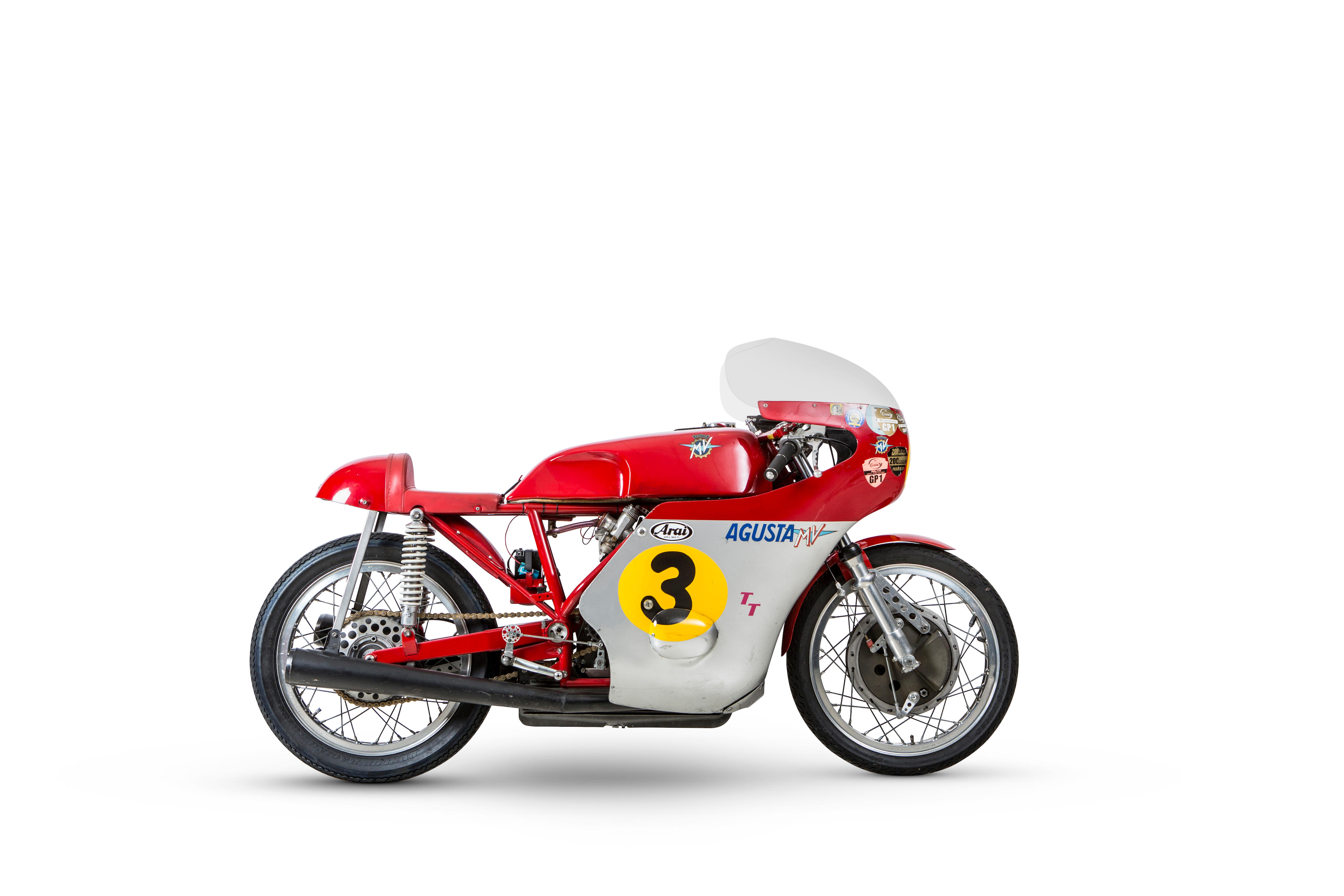

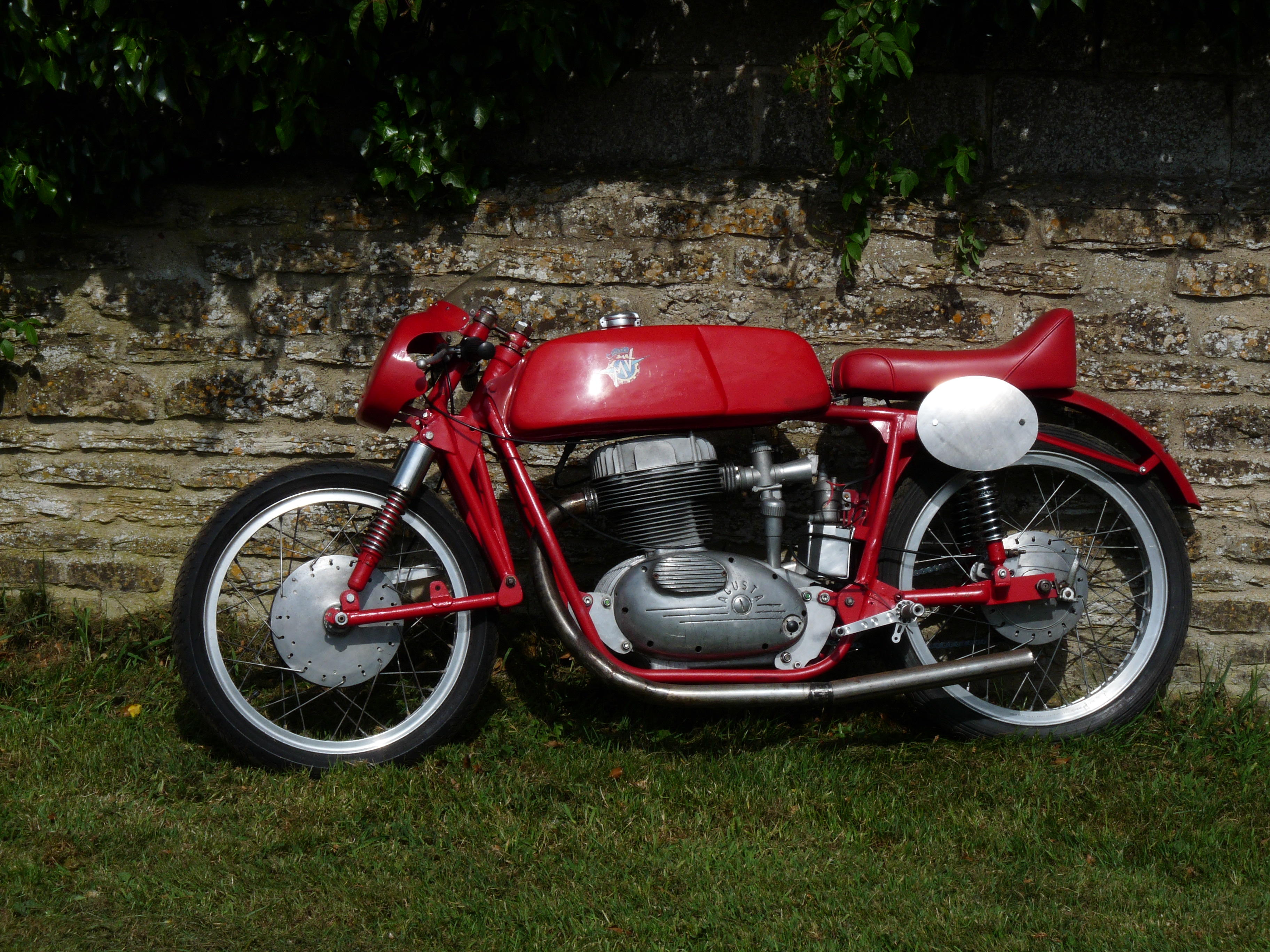
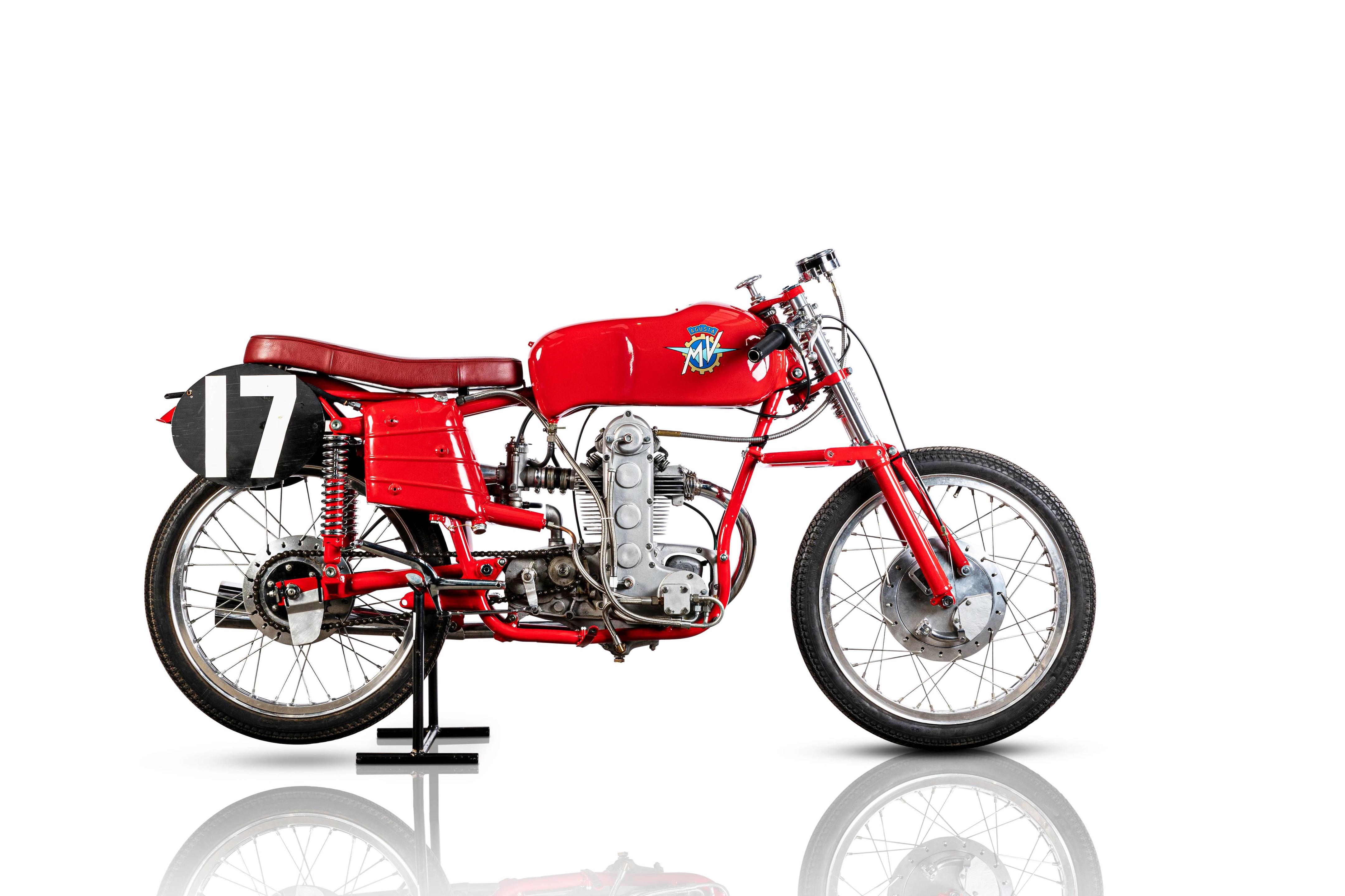
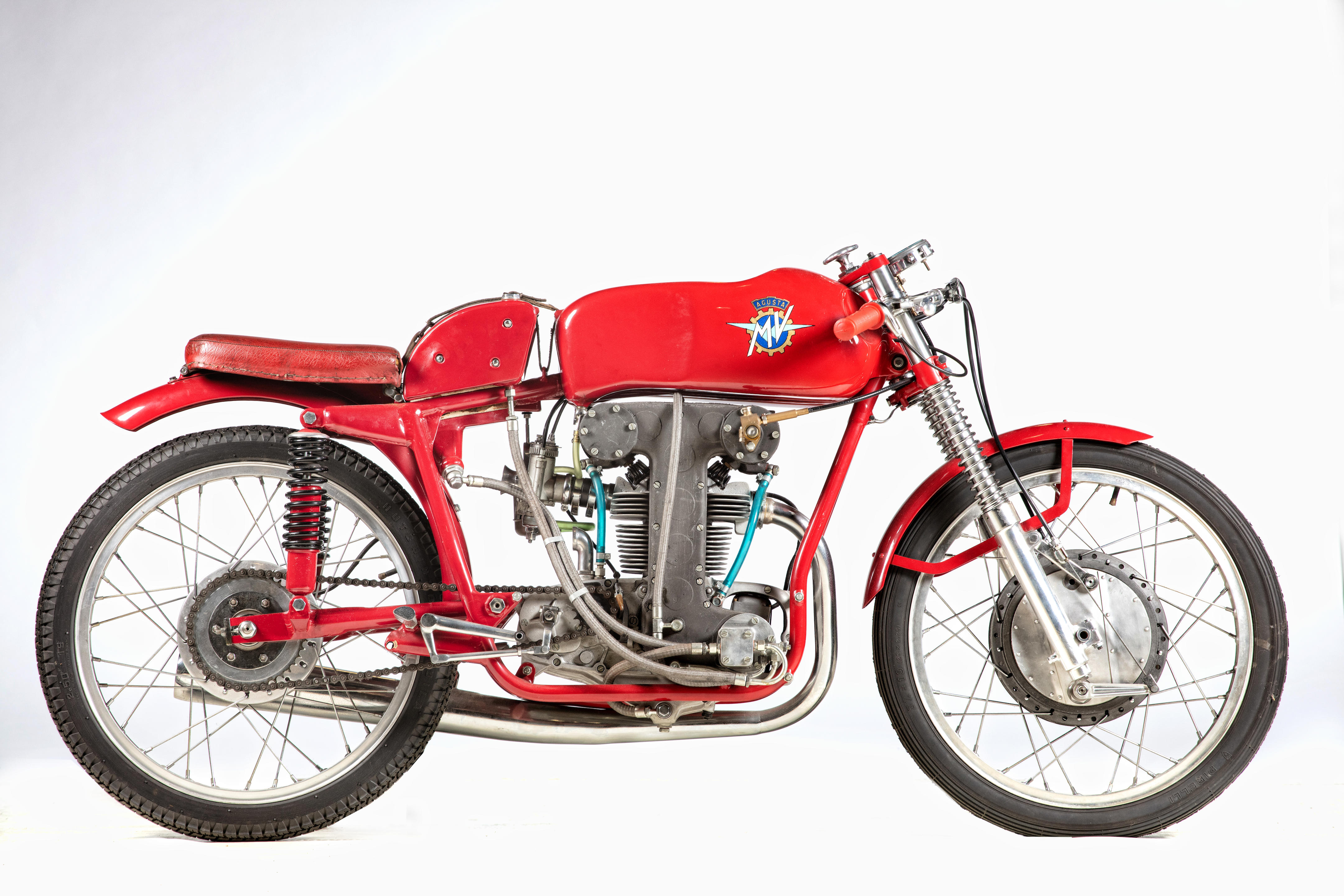
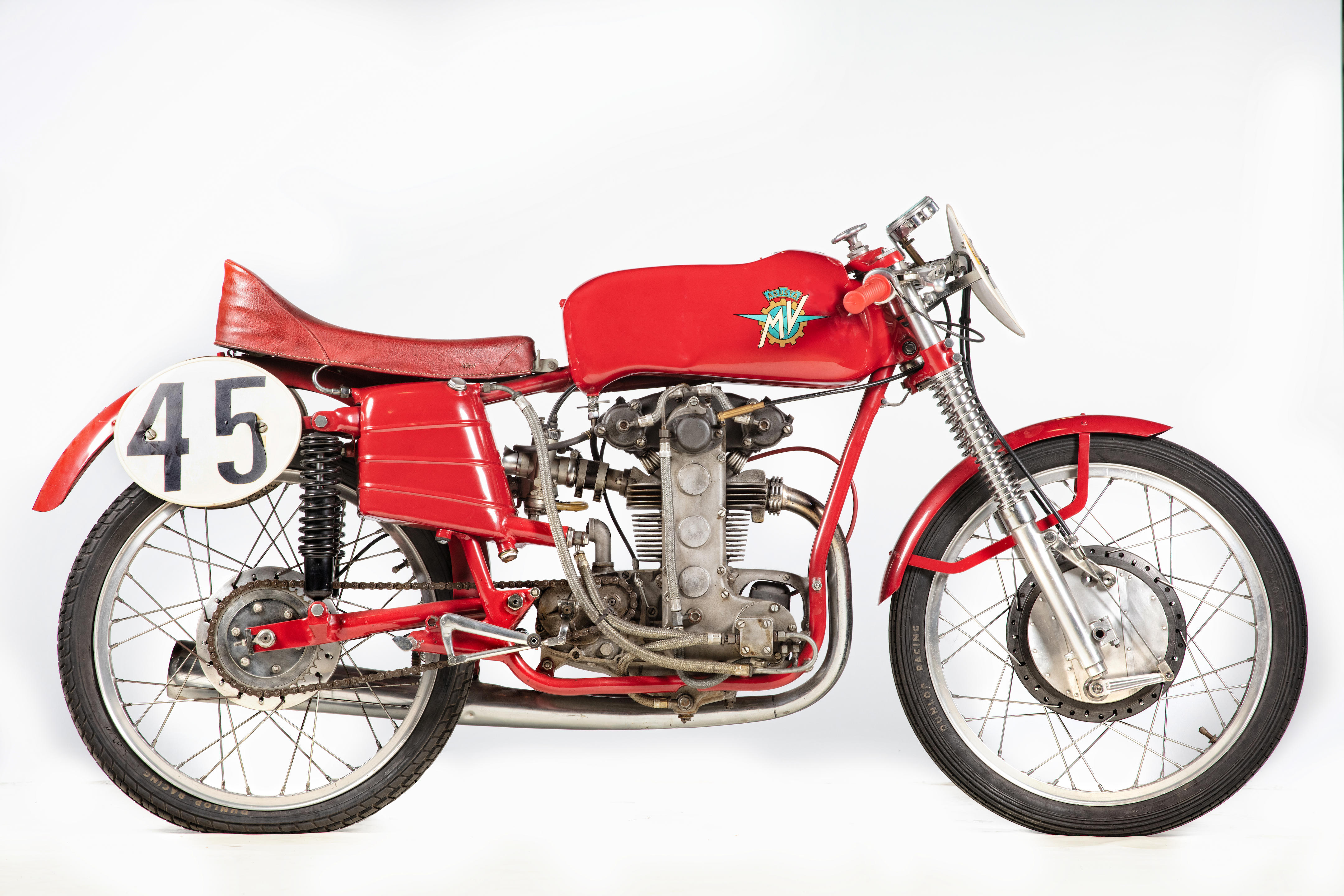


Testen Sie LotSearch und seine Premium-Features 7 Tage - ohne Kosten!
Lassen Sie sich automatisch über neue Objekte in kommenden Auktionen benachrichtigen.
Suchauftrag anlegen